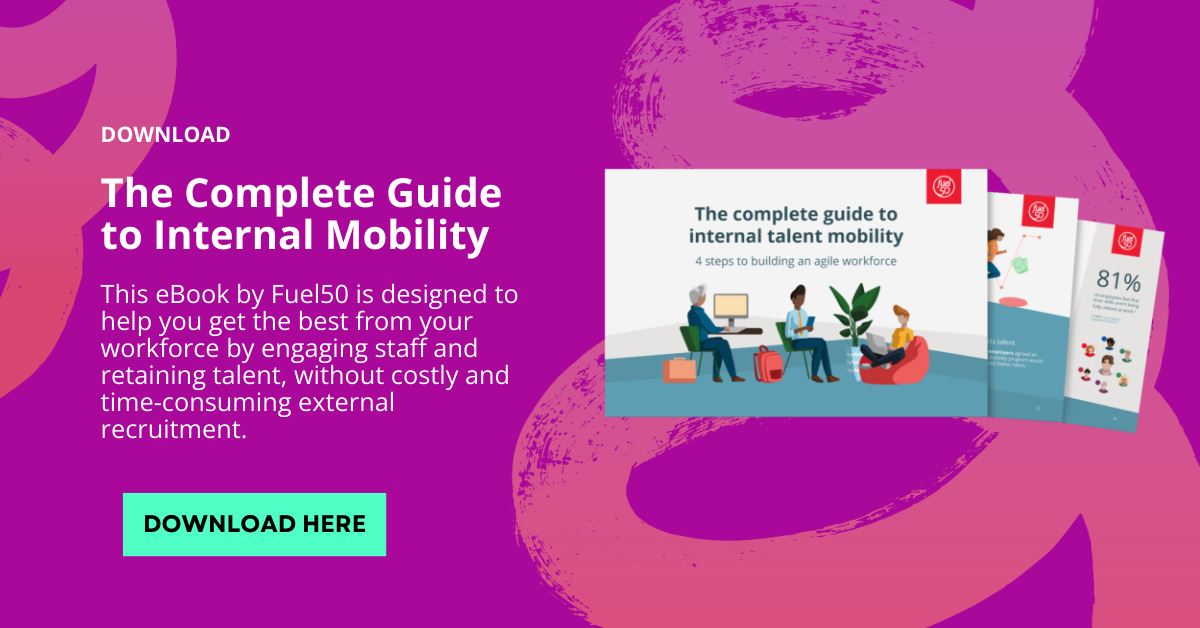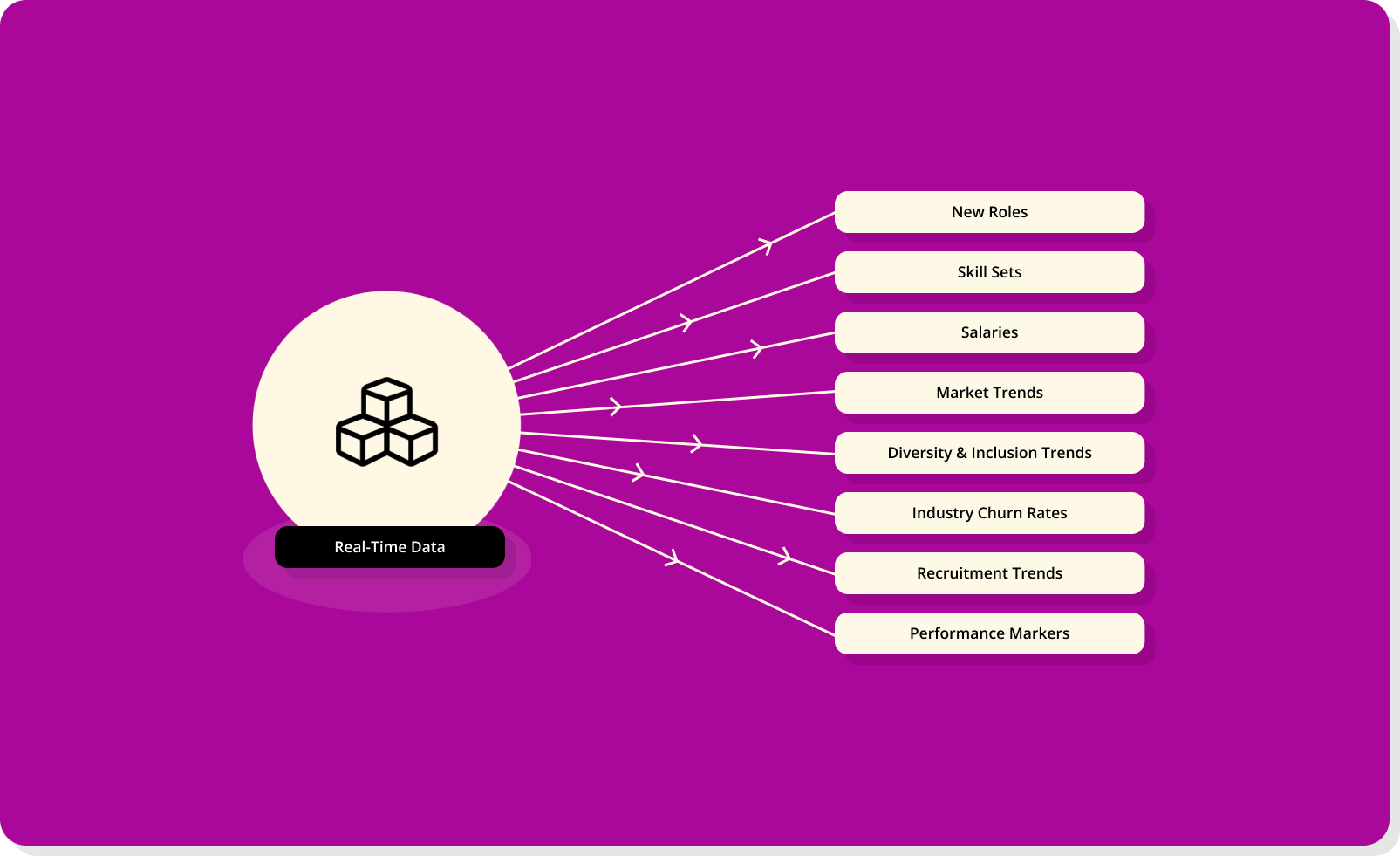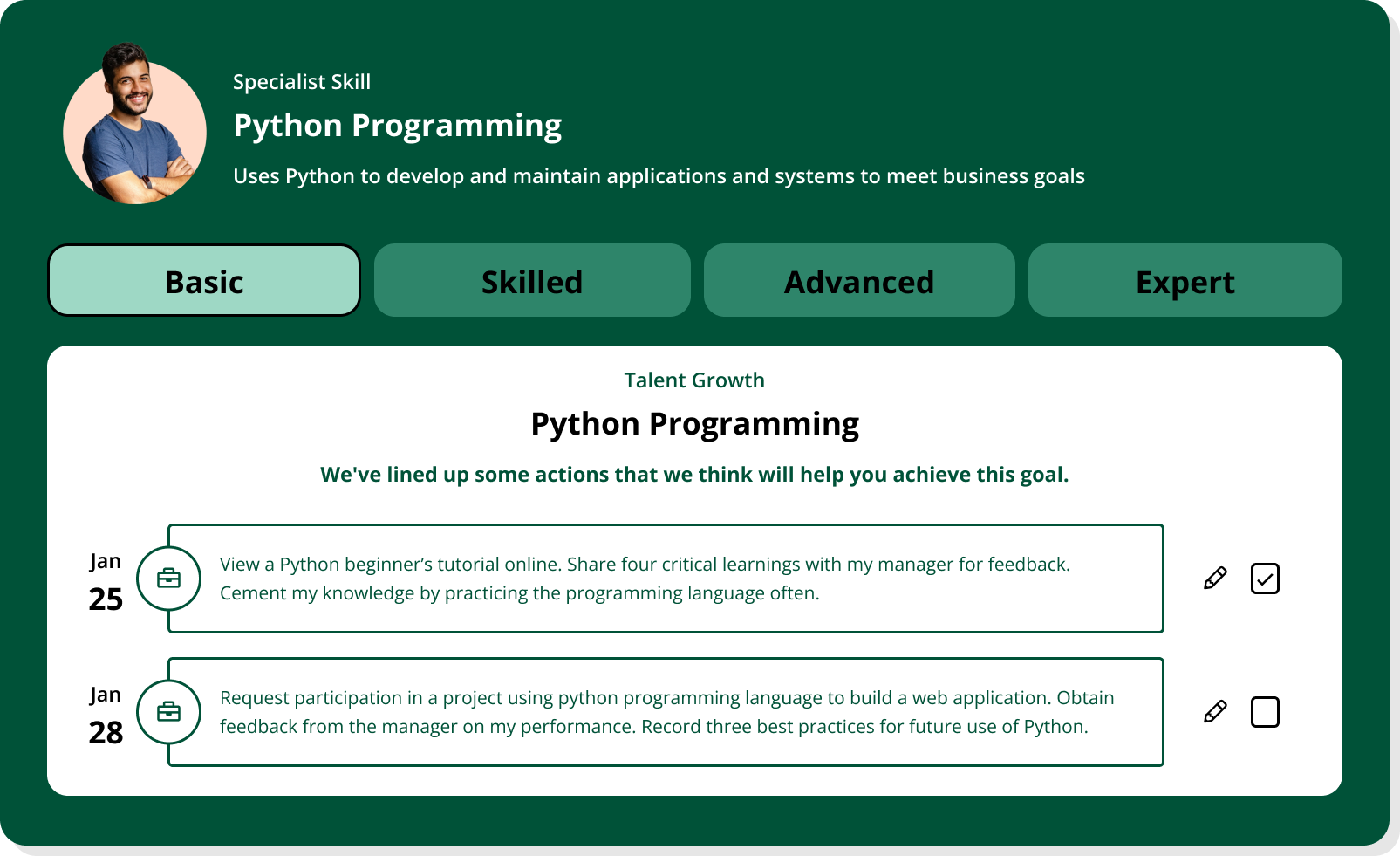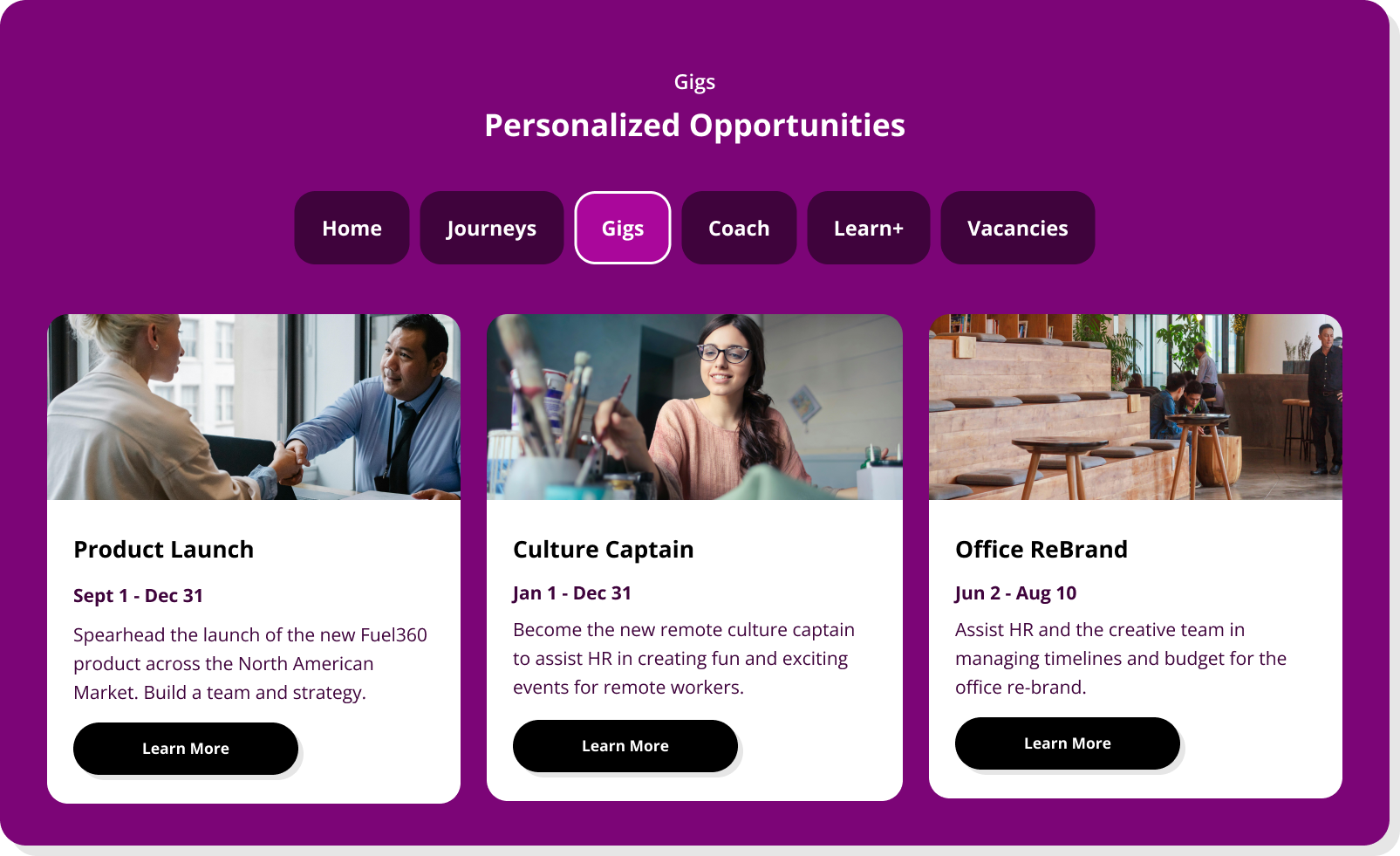Twenty years ago, people stayed at jobs because leaving was hard. You had to consider relocation, navigate limited job markets, and risk the unknown. Companies “retained talent” by making it difficult or costly to leave.
That world is gone.
In 2025, your best people wake up each morning and actively choose to stay. They have clear information about their market value, unlimited job opportunities that don’t require relocation, and networks that make switching jobs nearly frictionless.
The power dynamic has completely reversed, and that shift forces us to confront an uncomfortable truth: Most retention strategies are built for a world that no longer exists.
They try to create “stickiness” through comp packages, vesting schedules, and perks. But these tools are increasingly ineffective because they misunderstand the fundamental nature of the problem.
The real challenge isn’t keeping people from leaving, it’s fostering an environment where your best talent decides to stay even though they have every opportunity to leave. This issue therefore requires a fundamentally different approach to boost employee retention.
In this article, we’ll cover:
- Why retention has become exponentially harder
- What makes top performers stay
- How to build systems that offer genuine reasons to stay, rather than simply eliminating reasons to leave
What is employee retention?
Most companies think talent retention means stopping employees from leaving. But often, that merely masks symptoms, rather than addressing the main problem.
The truth is more complex. Talent retention focuses on creating an environment where your best people choose to stay because they want to. The emphasis is on choice, which changes everything about how we should view retention.
This shift from prevention to choice reflects a foundational shift in how people approach their careers. In 2025, no one stays at a company due to inertia anymore. Instead, people constantly evaluate whether their current role makes the best use of their time and talent.
This is where most companies go wrong. They try to “retain talent” through golden handcuffs or restrictive policies. The harder you try to force people though, the more likely they are to look for the exit.
The irony is the best retention strategies often don’t look like them; they look like growth strategies, engagement tactics, or culture-building initiatives, because when people are growing, engaged, and building something meaningful, retention takes care of itself.
So, in 2025, retention translates to developing an environment where staying is an active choice employees renew each day, not a passive state maintained through inertia or fear. The point is to make your company the obviously best choice for your best people, rather than their only choice.
The real question then isn’t “How do we keep people from leaving?” but “Why would our best people choose to stay?” The emphasis on talent retention in 2025
The stakes for talent retention have never been higher. But understanding why requires looking beyond the usual platitudes about people being a business’s greatest asset.
The true cost of employee turnover
In 2025, the cost of losing talent has grown exponentially. Here’s why:
First, modern software systems are now interwoven meshes of traditional code, ML models, and third-party services.
When your senior platform engineer leaves, for instance, they take with them the critical understanding of how these pieces fit together. Not just the “what” but the “why,” which tells ML models what to use when, why certain architectural choices were made, and which approaches to avoid based on past failures. That knowledge has become near impossible to document because the systems themselves evolve weekly.
Second, departures cause compounding damage to productivity. When an employee leaves, it slows down current work and disrupts the entire team’s speed.
Meanwhile, a new hire needs months to build context, no matter how skilled they are. During that time, the team operates at a fraction of its potential because every change requires additional review and validation.
Third, competition has become a zero-sum game. Your departing talent doesn’t vanish; they join your competitors and bring deep knowledge of your systems, challenges, and strategic plans. Given that competitive advantages depend on superior execution, this knowledge transfer can be devastating.
The math behind this is brutal: An employee’s departure in 2025 costs four to five times their annual salary not because of recruiting costs, but because of the combination of lost knowledge, disrupted velocity, foregone leverage, and the resulting competitive disadvantage.
This is why retention has moved from being an HR metric to a core business risk, emphasizing the importance of maintaining a high employee retention rate.
The growing skills gap
The conventional narrative about skills gaps misses the point. The real problem isn’t finding people with the right skills –– it’s finding people who can evolve their skills at the pace required.
For instance, look at how technical requirements have shifted:
- In 2020, knowing cloud infrastructure was enough.
- By 2023, you needed to understand AI/ML integration.
- In 2025, you need to grasp the interplay between traditional systems, AI, and emerging tech.
The implications are severe: When experienced people leave, you lose both current capabilities and the agility to adapt to whatever comes next. This matters more in 2025 because the half-life of technical skills has shortened dramatically; what took five years to become obsolete in 2020 now takes two years or less. So, keeping people who know how to learn and grow in your specific context has become a survival requirement.
Remote work changed everything
Besides shifting where people hold office, remote work also fundamentally altered the power dynamics of employment. But most companies haven’t grasped the full implications for personnel retention, namely: Your competitors can now hire your best people without requiring relocation.
- Salary bands have become more transparent across regions.
- Company culture has to work asynchronously, or it won’t work at all.
- The traditional “golden handcuffs” of location and relationships have weakened.
The barriers to switching jobs have dropped to nearly zero, so your retention strategy can’t rely on inertia anymore. Every day, your best people see opportunities from companies they never would have considered before 2020.
The AI multiplier effect
The most dangerous consequence of losing key people in 2025 is what you miss out on.
AI tools have created a new category of “leverage” that wasn’t possible before. With them, your best people are building systems that multiply their impact. So, when they leave, you lose:
- Their current productivity
- The systems they would have built
- The multiplicative effect those systems would have had on team productivity
- The competitive advantage those multipliers would have produced
This compounding means you miss out on what could have been an entire system of leverage.
Retention in 2025 therefore needs to focus on maintaining your company’s ability to evolve and compete in an environment where:
- Knowledge compounds faster than ever.
- Skills become obsolete more quickly.
- Geographic barriers no longer protect you from competition.
- AI tools amplify the impact of your best people.
- The cost of wrong decisions compounds faster.
3 Examples of companies with solid retention
Three pattern emerge across companies with exceptional retention: large investment in employee development, tangible benefits that acknowledge real needs, and a focus on meaningful work over perks. Let’s look at companies that demonstrate these approaches effectively.
ConocoPhillips: Investing in career transitions
According to a 2023 LinkedIn survey, ConocoPhillips maintains a 10.6-year median tenure –– one of the highest in any industry.
The oil company’s approach centers on two key groups: young talent and military veterans. For new graduates, It offers university scholarships that create a pipeline of committed talent. For veterans, ConocoPhillips provides challenging global projects that leverage military experience in meaningful ways.
This dual focus shows how targeted development programs can drive retention.
Hyatt Hotels: Making every role count
Hyatt’s retention success challenges conventional wisdom about the hospitality industry. Its housekeeping staff –– typically the position with the highest turnover in hotels –– stays an average of 12 years.
The key? The company includes housekeeping staff in its broader employee engagement strategy, offering tangible benefits like restaurant discounts across properties and tuition reimbursement.
More importantly, they partner with organizations like Khan Academy for upskilling to show their commitment to growth regardless of role, which significantly boosts employee morale.
Mars, Inc.: Values-driven retention
Fortune’s research shows Mars maintains just 5% turnover in the U.S., which is remarkable for a company that size.
Its approach centers on five principles –– quality, responsibility, mutuality, efficiency, and freedom –– that guide every decision.
These aren’t mere wall decorations either; they drive genuine behavior. Take quality, for instance: Mars discards about 2% of all M&Ms for minor blemishes, showing employees that principles matter more than short-term profits.
That consistency between stated values and actions builds the kind of trust that makes valuable employees stay.
How to keep your best people using effective employee retention strategies
The best employee retention strategies operate more like a flywheel, where each element reinforces the others.
Start before day one
The seeds of turnover are often planted during hiring. Companies optimize for the wrong things: They look for skills when they should look for trajectory, they assess knowledge when they should assess learning velocity.
The best predictor of retention isn’t a candidate’s skills or experience, but whether their growth curve matches your company’s growth path. A senior engineer who’s plateaued but has all the right skills is a greater retention risk than a junior engineer on a steep learning curve.
Companies thus have to rethink their hiring:
- Instead of asking, “Can they do the job today?” Ask, “Will they be bored in 18 months?”
- Rather than assessing current knowledge, test for learning ability.
- Focus on growth alignment over skills alignment to reduce employee turnover.
Build functional growth paths
When someone can’t see how their next three years will make them more capable than their last three, they start looking elsewhere.
Most growth paths fail because they’re linear while careers are not. Companies create artificial ladders — junior, senior, lead, principal — when real growth looks more like a tree with multiple branches.
Effective growth paths feature three elements:
- Visible next steps (what you could be doing in six months)
- Multiple directions (technical, managerial, product, or new domains)
- Clear value creation (how you’ll make a greater impact over time), which ultimately enhances employee satisfaction.
Equip your managers with the right toolkit
The best retention tools are simple but require consistency.
First, ask three key questions in every one-on-one discussion:
- What are you learning?
- Where do you feel stuck?
- What would make next month better than this month?
These questions pinpoint issues before they become exit interviews.
Second, develop a “growth contract” — a clear agreement about what growth looks like for each person. Rather than listing vague goals, outline specific capabilities they’ll develop and problems they’ll learn to solve.
Third, promote context overflow, where you consistently share more information than may seem necessary about decisions, strategy, and company direction. Engaged employees rarely leave environments where they have deep insight into how their work matters.
Measure what matters
Most companies track lagging indicators like exit interviews and turnover rates, but by then, it’s too late.
The real signals come earlier:
- Learning velocity: Are people learning new things at the same rate as they were six months ago?
- Impact expansion: Is someone solving bigger problems compared to last quarter?
- Network growth: Are employees building new relationships throughout the company?
- Initiative rate: How often do people propose new ideas or take on optional challenges?
When these metrics drop, turnover usually follows six to nine months later.
The common thread in all of this is that people stay when they grow. Everything else — compensation, perks, titles — matters less than steady, visible growth in capability and impact, which is crucial for retaining employees.
How Fuel50 can help boost your retention
When organizations can accurately map their skills ecosystem, identify hidden capabilities, and connect people to growth opportunities, they can boost employee retention naturally.
Here’s how Fuel50 helps you with that.
Develop clear career visibility and growth paths
One of the primary reasons employees leave organizations is a lack of obvious career opportunities.
Fuel50 tackles this head-on through its AI-powered talent marketplace that provides unprecedented visibility into potential career paths.
Besides showing basic job listings, it creates sophisticated career journey maps that:
- Visualize both vertical and lateral move opportunities
- Highlight potential paths employees may not have considered
- Show specific skill requirements for each career step
- Connect employees to relevant learning resources
- Surface project opportunities that align with career goals
For example, UCI saw a 50% reduction in attrition after implementing Fuel50’s career pathing tools. The transparency into growth opportunities transformed its employees’ perception of long-term career potential within the organization, significantly improving the employee retention rate.
Enable skills-based development
Traditional employee development often fails because it’s too generic or disconnected from real opportunities.
Fuel50’s expert-driven skills ontology creates a precise, personalized approach to skill development that drives retention by:
- Mapping thousands of skills across your organization
- Crafting detailed skill profiles for each role
- Identifying specific skill gaps tied to desired career moves
- Recommending targeted learning experiences
- Tracking skill development progression
- Connecting skills to internal opportunities
KeyBank’s experience demonstrates the power of this approach –– it saw a 60% increase in training participation after employees were able to see the direct connection between skill development and career growth. Further, the company’s “Future Ready” program, powered by Fuel50, helped it retain talent by showing clear paths to build needed skills, which is a crucial aspect of successful employee retention programs.
Empower internal mobility
Employees often leave because they simply don’t know about internal opportunities that match their interests.
Fuel50’s marketplace functionality solves this through sophisticated matching that:
- Uses advanced technology to connect employees to relevant opportunities based on skills and interests
- Includes both traditional roles and short-term projects
- Allows employees to express interest in future roles
- Notifies employees of relevant new opportunities
- Helps managers find internal talent for open roles
- Facilitates cross-departmental moves, thereby supporting employee retention efforts
Strengthen manager-employee developmental conversations
Poor managerial support for development is a major driver of turnover. Fuel50 transforms these crucial relationships by giving managers unprecedented insight into their teams via:
- Detailed views of team members’ skills and aspirations
- Suggestions for developmental conversations
- Alerts about flight risks
- Visibility into potential career moves for team members
- Tools to support skill development planning
- Resources for coaching conversations
UCI reported this enhanced managerial capability was instrumental in its retention improvements. Managers moved from annual development discussions to ongoing, meaningful career conversations supported by rich data, highlighting the need to train managers effectively.
Foster employee engagement through personalization
Generic career development programs often fail to engage employees. Fuel50’s hyper-personalization fosters rich engagement by:
- Building unique “career DNA” profiles for each employee
- Tailoring recommendations based on individual interests and goals
- Providing personalized skills assessments
- Matching employees to mentors based on career aspirations
- Customizing learning recommendations
- Creating individualized development plans
CarTrawler achieved a 74% satisfaction rating with Fuel50’s personalized approach. Employees reported feeling understood and valued, which led to stronger organizational commitment. Allied Irish Banks, meanwhile, saw 96% of users return to the platform regularly, demonstrating the engaging power of personalization.
These capabilities work in sync to produce a comprehensive retention strategy that addresses the key reasons employees leave, namely, lack of growth opportunities, poor developmental support, limited internal mobility, and generic career paths.






